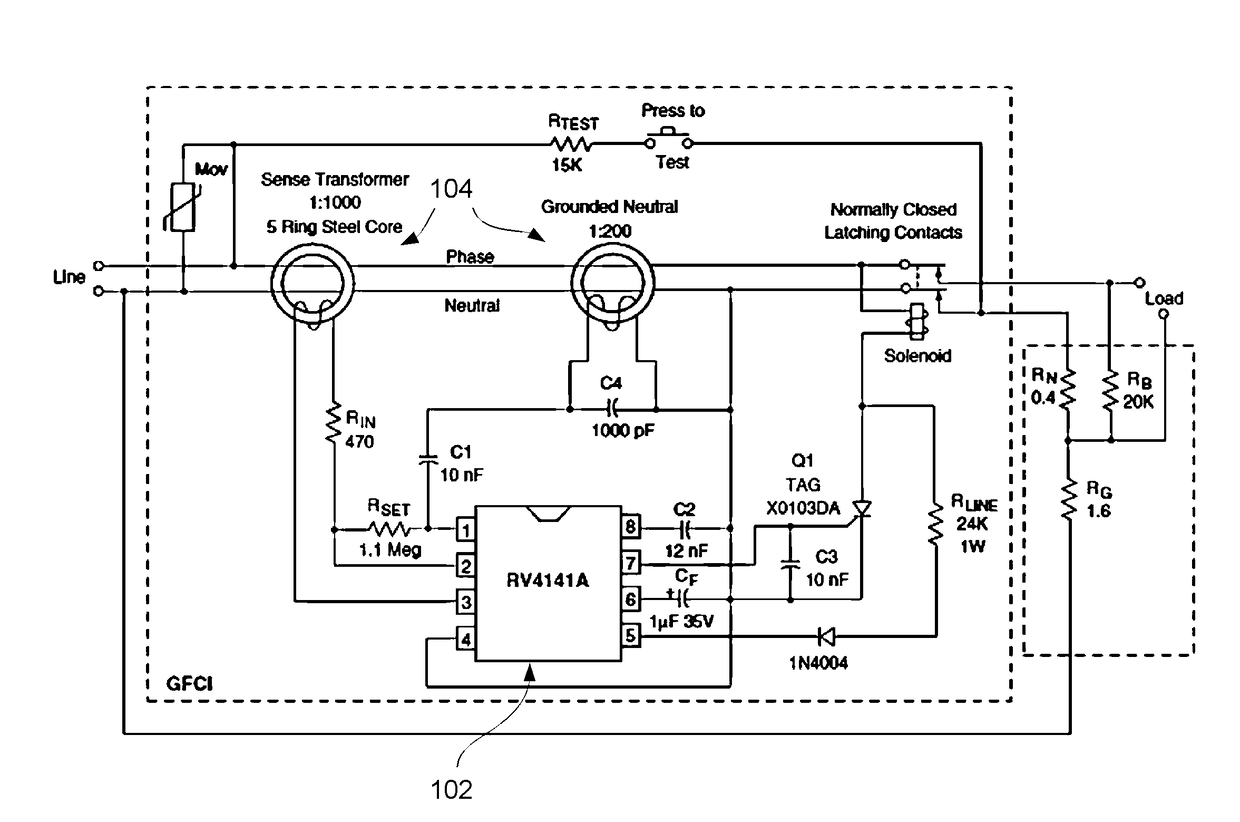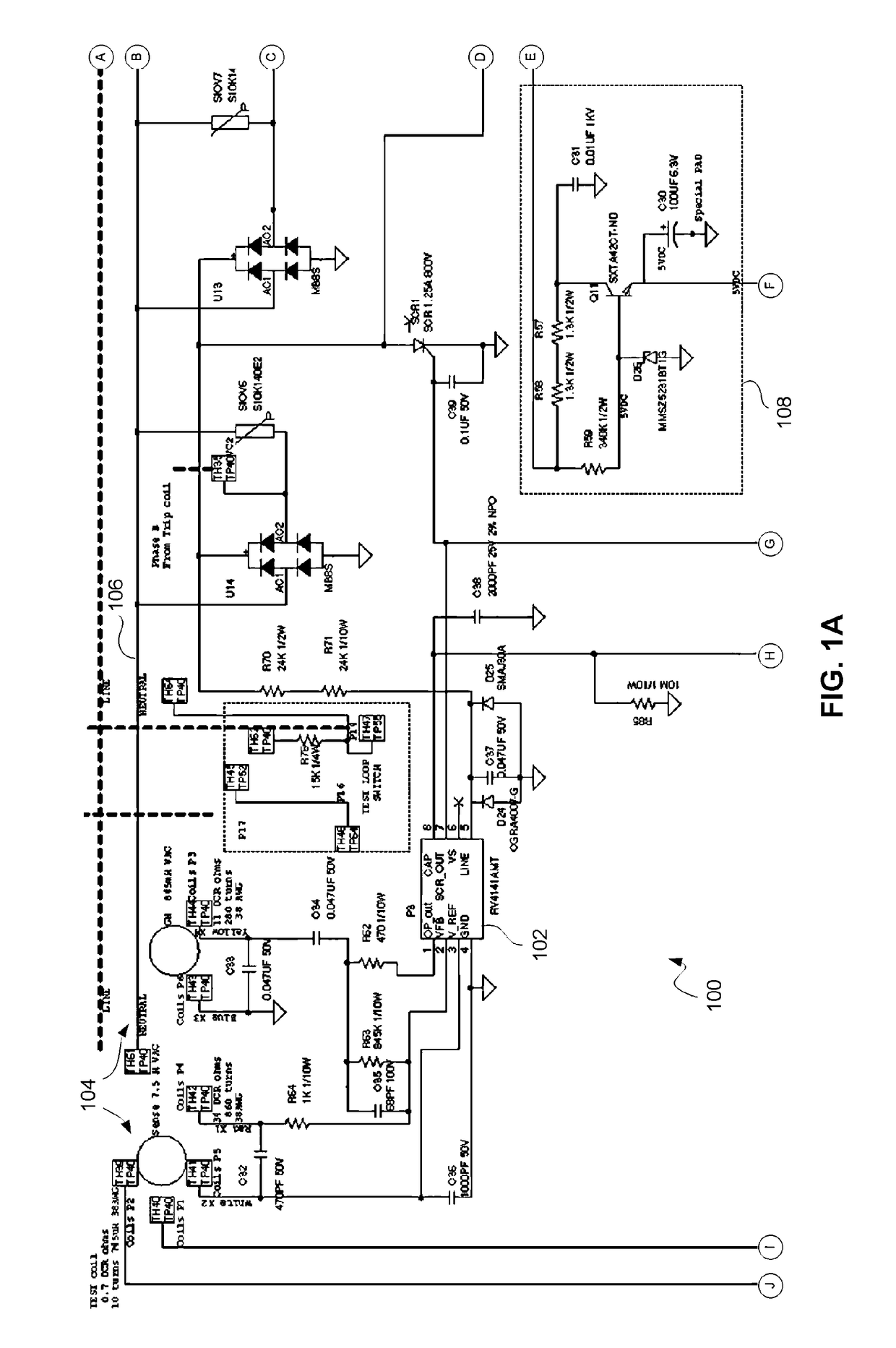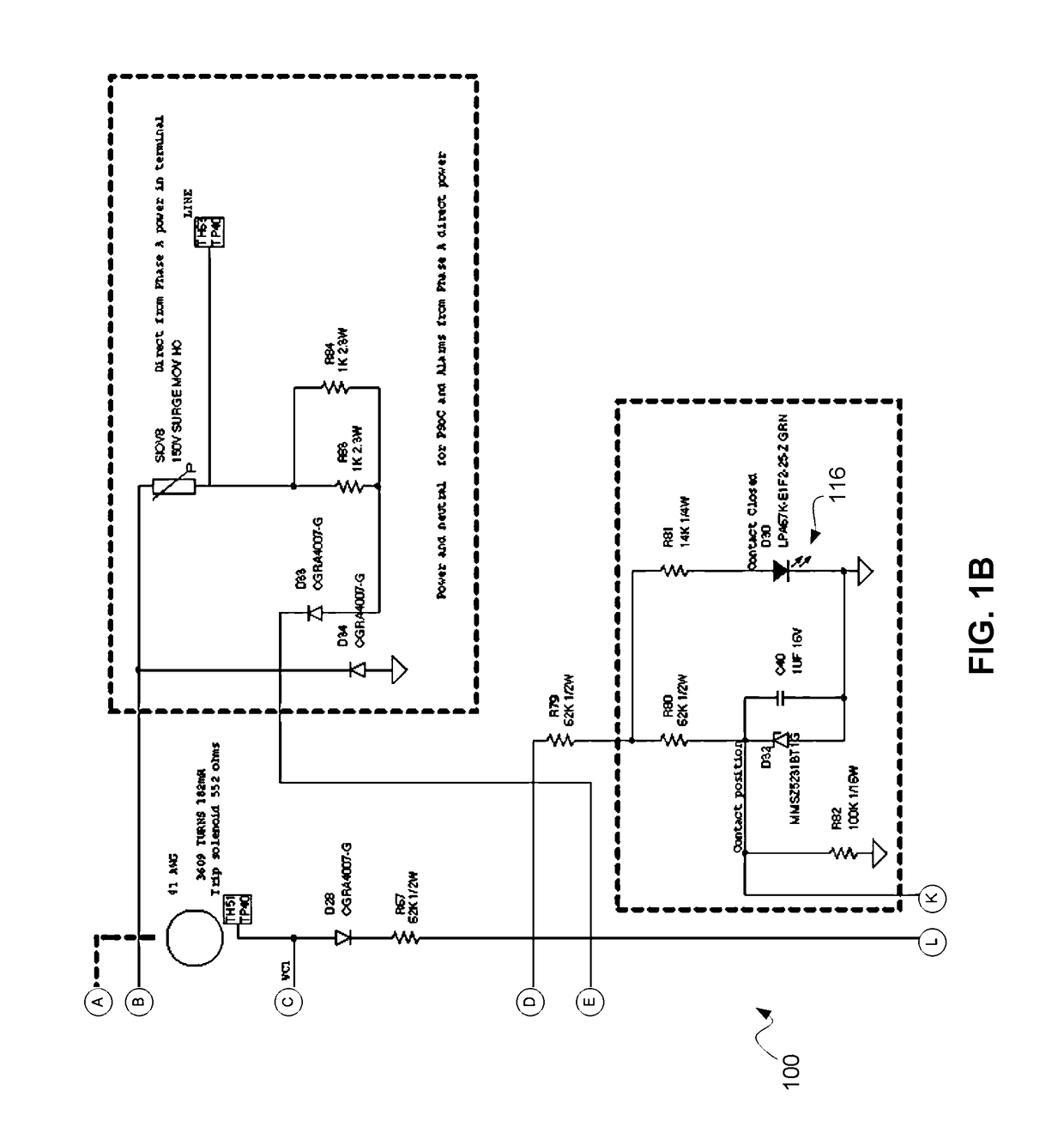Self Testing GFCI
a self-testing, circuit-interrupting technology, applied in the direction of protective switch details, instruments, signalling systems, etc., can solve the problems of reducing affecting the safety of users, so as to reduce the number of instances of nuisance tripping
- Summary
- Abstract
- Description
- Claims
- Application Information
AI Technical Summary
Benefits of technology
Problems solved by technology
Method used
Image
Examples
Embodiment Construction
[0032]Referring now to the drawings, wherein like reference numerals designate corresponding structure throughout the views.
[0033]Referring now to FIGS. 1A-1C a schematic diagram illustrating a circuit configuration of the circuit interrupter 100. The schematic diagram is provided into three parts on FIGS. 1A through 1C where the circles with letters indicate circuit connections between FIGS. For example, on the right hand side of FIG. 1A the designations A-E are each shown inside a circle. The corresponding connections for designations A-E are shown on the left hand side of FIG. 1B where “A” in FIG. 1A is a connection to “A” in FIG. 1B and so on. Likewise, FIG. 1A shows designations F-J on the bottom of the page and corresponding designations F-J are shown at the top of FIG. 1C indicating the circuit connections. Finally, the designations K-L are shown at the bottom of FIG. 1B with corresponding designation K-L shown at the top of FIG. 1C indicating the circuit connections.
[0034]A ...
PUM
 Login to View More
Login to View More Abstract
Description
Claims
Application Information
 Login to View More
Login to View More - R&D
- Intellectual Property
- Life Sciences
- Materials
- Tech Scout
- Unparalleled Data Quality
- Higher Quality Content
- 60% Fewer Hallucinations
Browse by: Latest US Patents, China's latest patents, Technical Efficacy Thesaurus, Application Domain, Technology Topic, Popular Technical Reports.
© 2025 PatSnap. All rights reserved.Legal|Privacy policy|Modern Slavery Act Transparency Statement|Sitemap|About US| Contact US: help@patsnap.com



